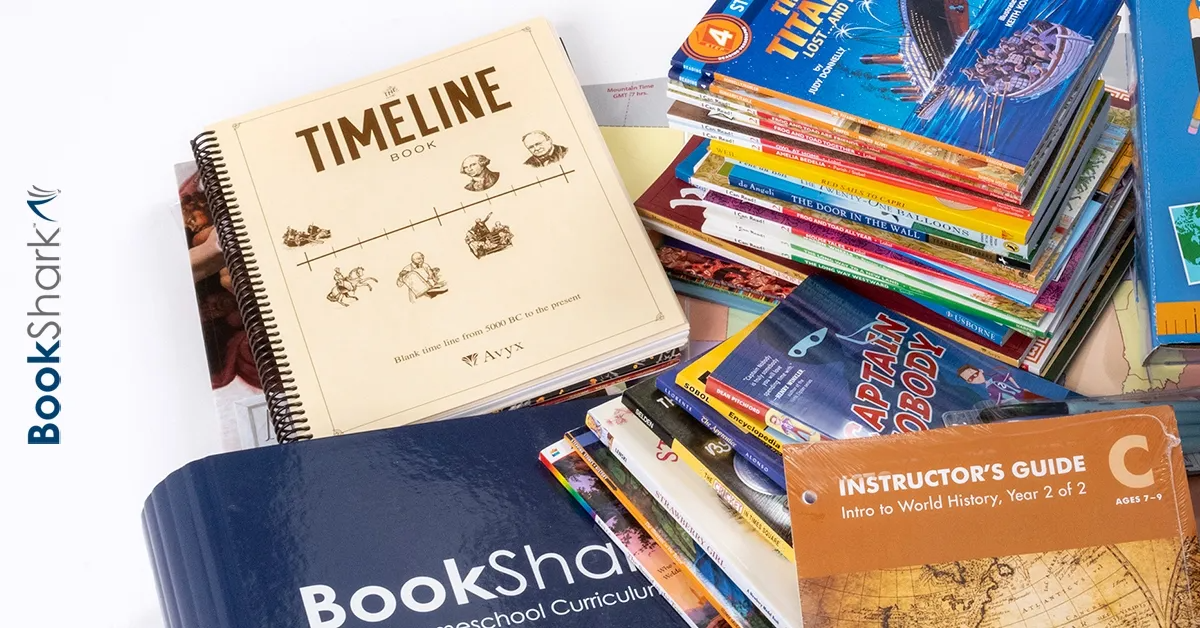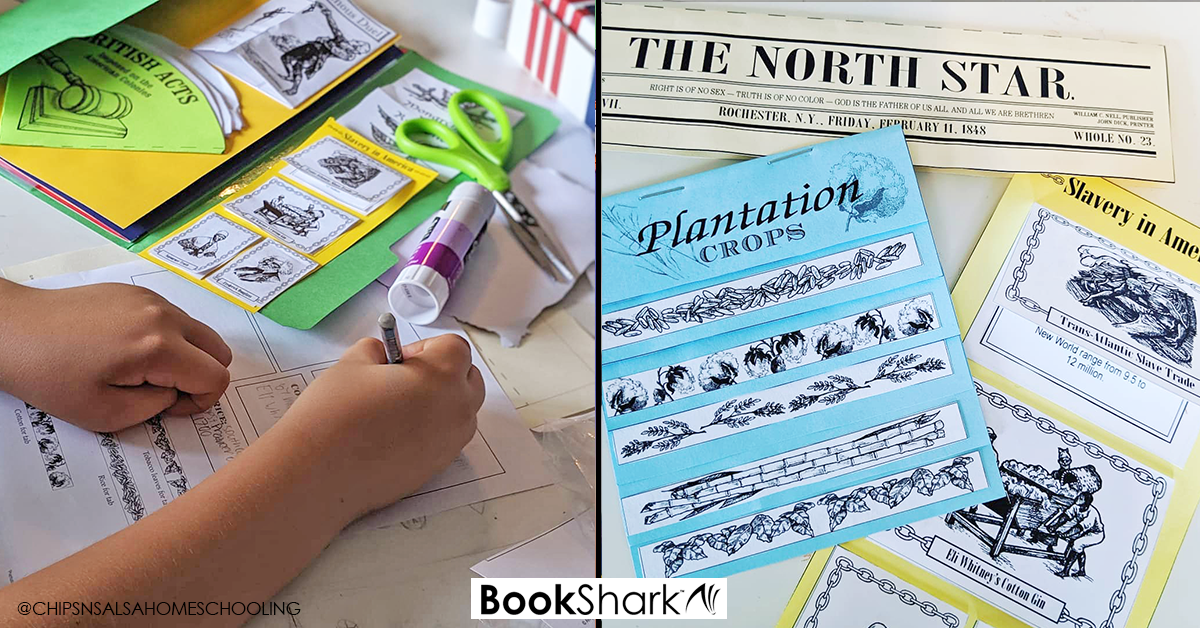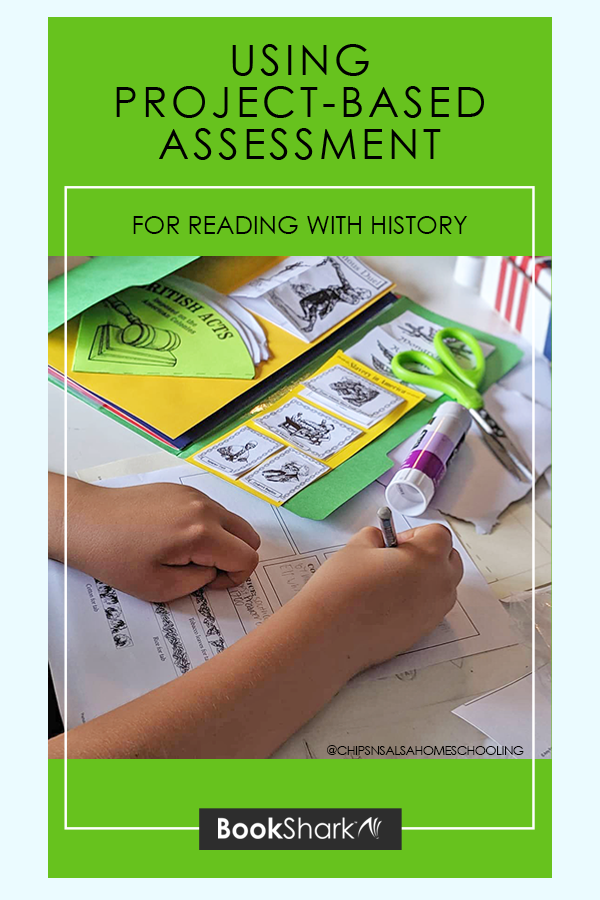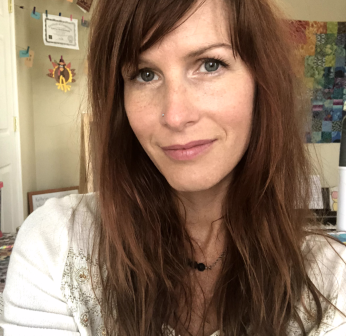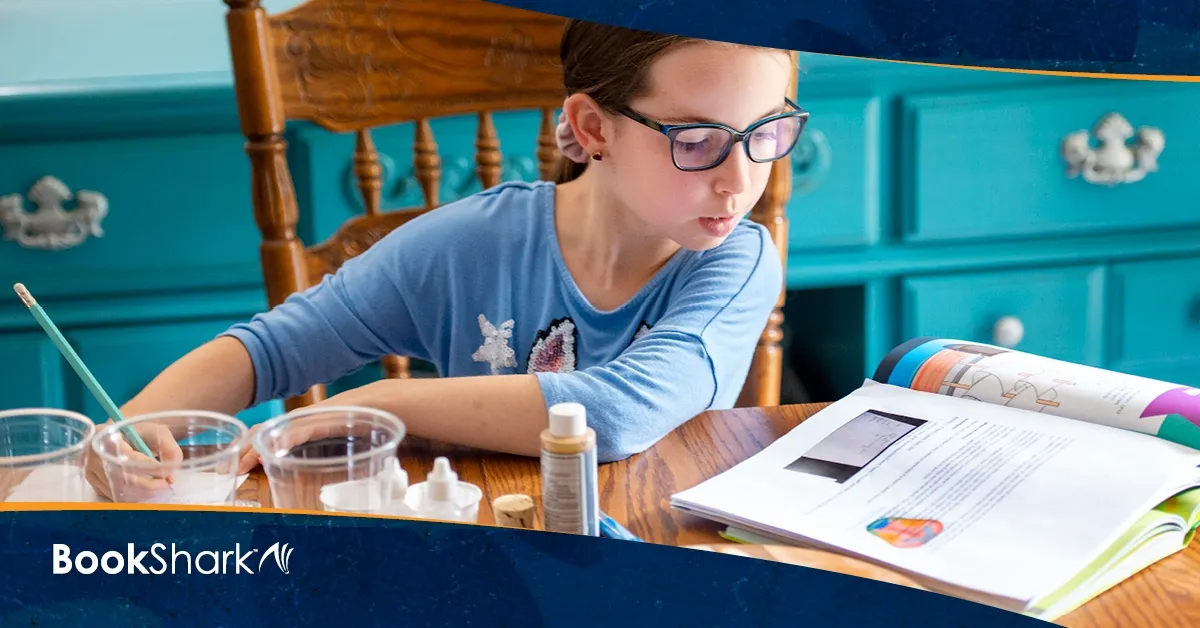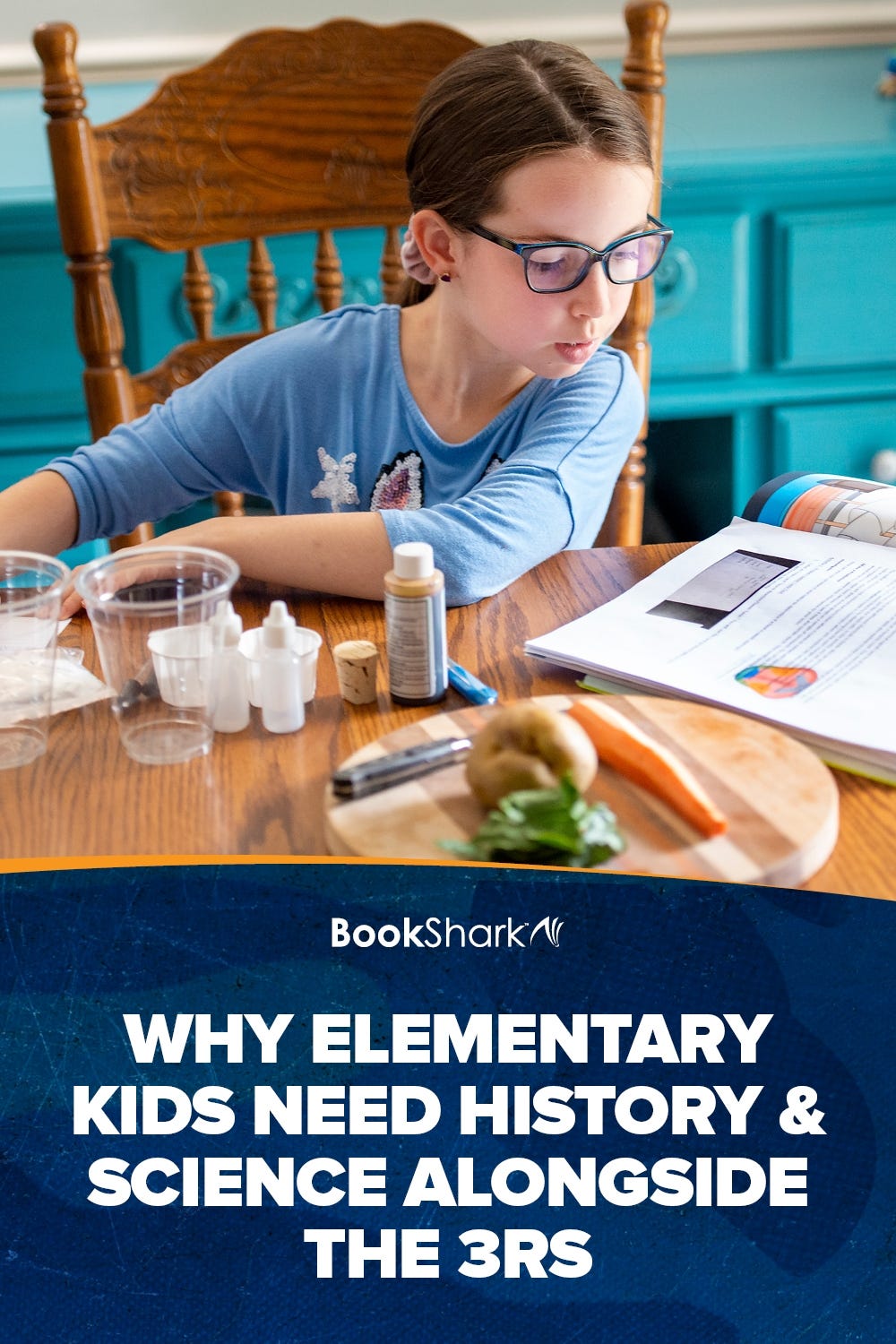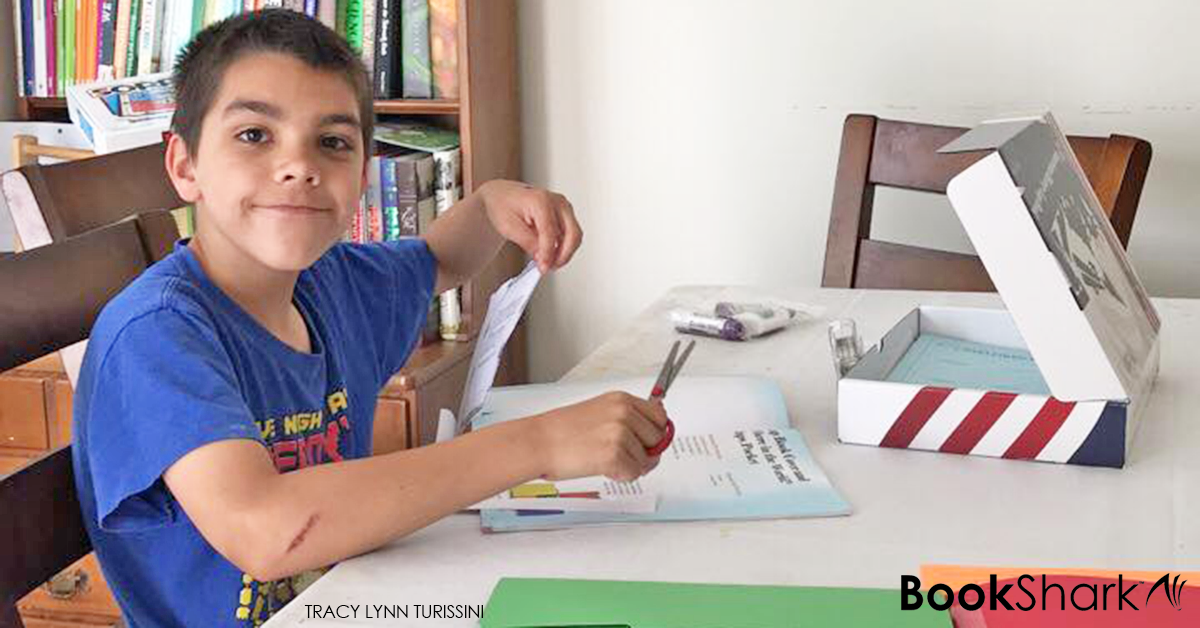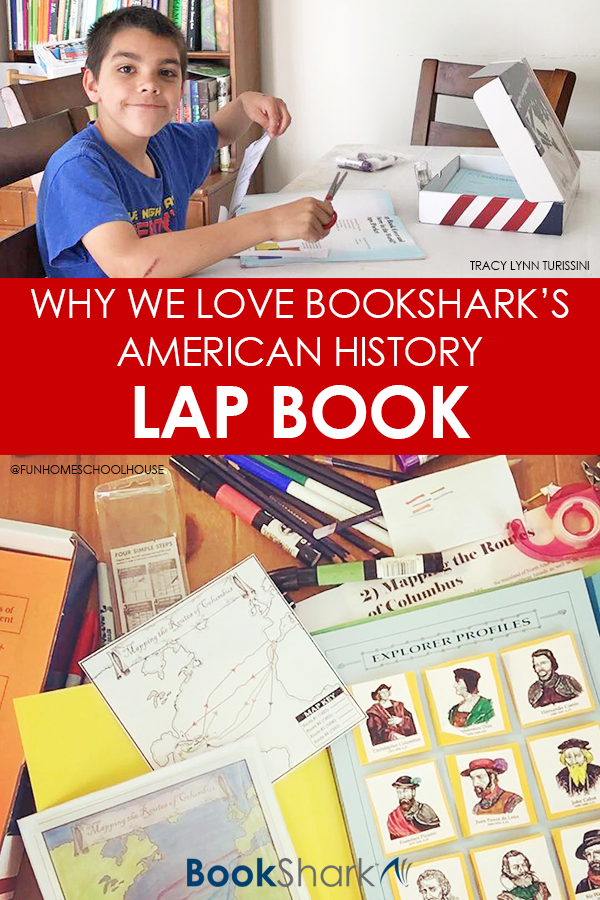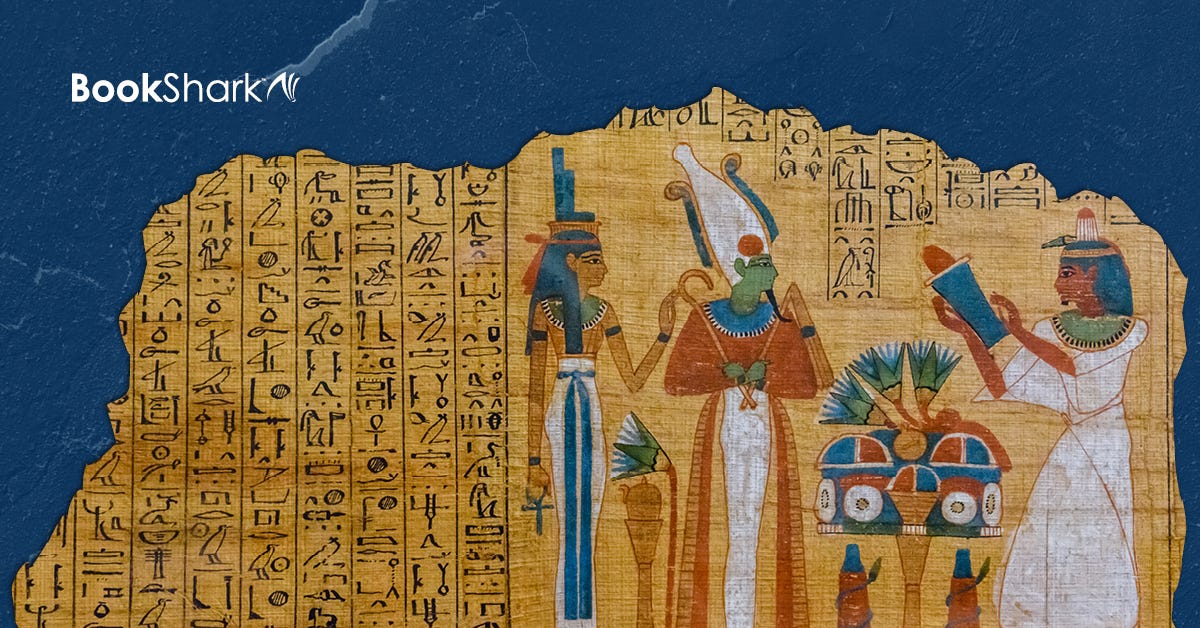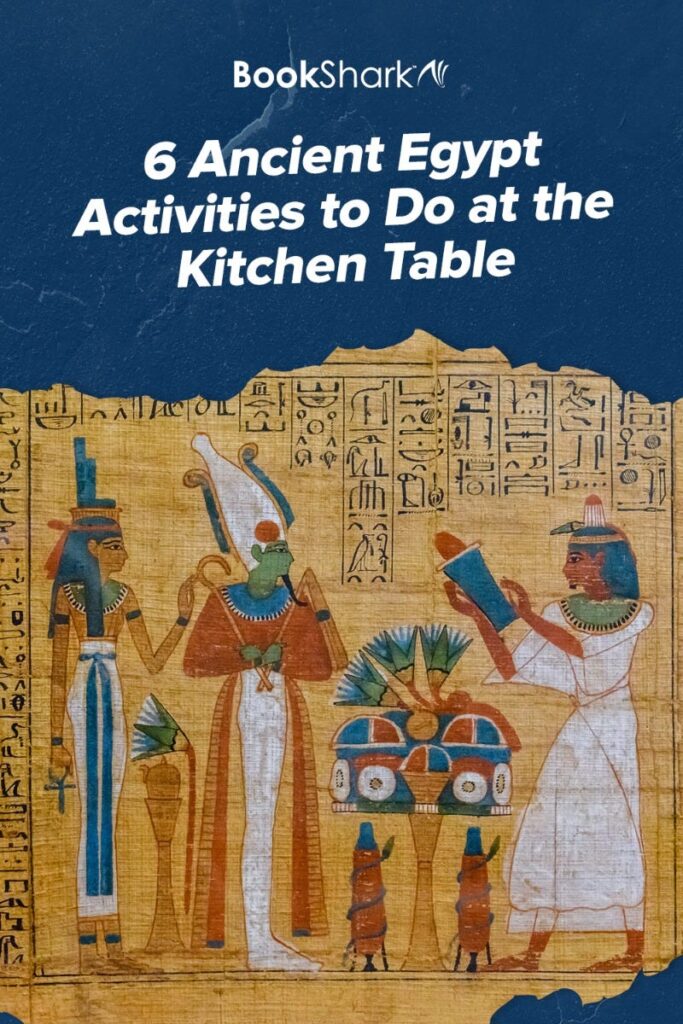With history’s constant expansion, it’s easy to understand why homeschooling the subject may feel a bit daunting. How can children begin to grasp how it all fits together? There are so many people, cultures, continents, and events!
One answer is a history timeline.
Timelines come in a variety of formats, but one thing is consistent. Whether it’s vertical or horizontal, there’s a dated line that helps students put information in chronological order.
Students can create history timelines for a variety of reasons:
- to study a specific era or region
- to see the events of a person’s life
- to trace the development of a particular subject—like the evolution of art or progress of scientific discoveries
- to compare the histories of multiple countries at the same time
- to give context to a person’s life or an event
Homeschool timelines are incredibly versatile. They can be kept in a binder, hung on a wall, or even written on adding machine tape, They come pre-printed (like BookShark’s Timeline Book), or students can make their own. Whatever format you choose, consider these five benefits to making one part of your homeschool history studies.
1. Homeschool Timelines Help Kids Make Connections
A timeline acts as a way to tie history together. As students add people, events, scientific discoveries, and inventions to their timelines, they discover how these smaller puzzle pieces fit together into the bigger picture of history.
Teaching tip: Color code your timelines. For example, you can write people’s names in red, events in blue, etc. Or you can assign specific colors to countries and label anything to do with that area in the same color. Just keep a key for reference.
2. Homeschool Timelines Provide a Way to Organize Learning
Many parents enjoy a chronological approach to studying history, so using a timeline makes perfect sense. But there are also times when you may want to follow a rabbit trail—something your kids are interested in studying or a current event you want to take advantage of, like the Olympics or US Elections.
When you use a timeline like BookShark’s The Timeline Book, students can add to it even when they aren’t studying history sequentially. They will see how their current studies fit into the broader scope of history.
Teaching tip: Have students memorize a few key dates. These can become pegs to hang their learning on. For example, while studying the American Revolution, knowing what happened in 1776 is essential.
3. Homeschool Timelines are the Perfect Review
With a timeline, students have the opportunity to look back over what they have learned and review it. And when you ask questions about their timelines, it can be an informal method of evaluation.
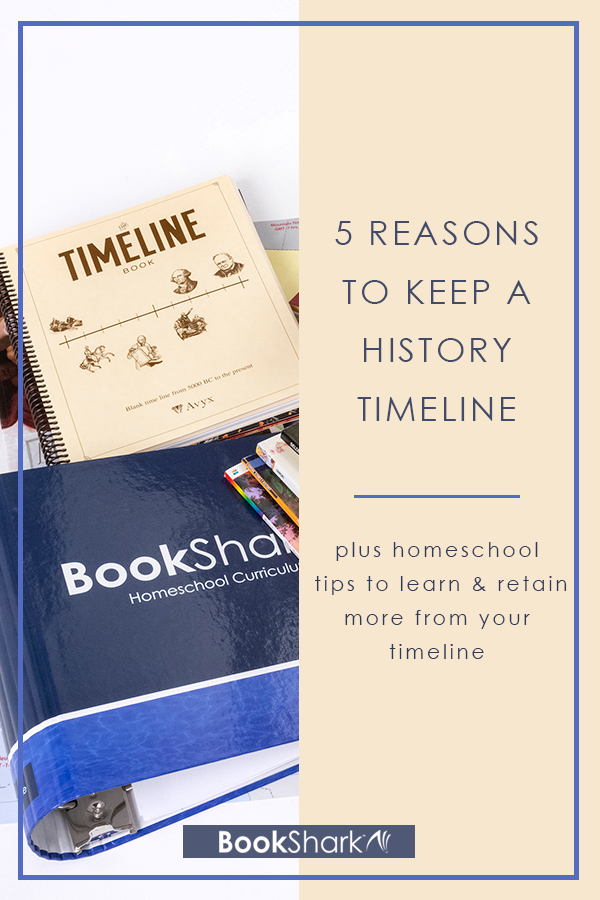
Teaching tip: Have students show off their timelines. When they are sharing it with grandparents, aunt, uncles, etc, they will naturally be telling others about what they learned. You’ve covered narration and review at the same time!
4. Homeschool Timelines Develop a Global Worldview
Students can see what was going on in different parts of the world at the same time. For example, using a timeline when studying inventors and inventions shows students that ideas were often being worked on concurrently, but in different ways.
- Thanks to a timeline kids will realize that Christopher Columbus and Leonardo da Vinci were contemporaries.
- They will marvel that Socrates, Buddah, and Confucius all lived at around the same time period.
- And they may be surprised to learn that while Europe was mired in the Dark Ages, the Islamic Empire and China had a flowering of science and art.
Teaching tip: When working on your timelines, look for overlap. Prompt them to consider, “How did people from around the world contribute to this event, idea, etc.? Does this event remind you of something else in history? While this is happening here, what’s happening elsewhere?”
5. Homeschool Timelines Show Patterns in History
Timelines help students discover patterns in history. You’ve probably heard a variation of George Santayana’s observation, “Those who cannot remember the past are condemned to repeat it.” By using a timeline, students see certain patterns emerge. Rising tensions, war, times of economic depression, times of prosperity—these tend to cycle in almost every developed nation around the world.
When students look back over their timelines, they can find specific types of events more easily and compare to current events. The 2020 pandemic is the perfect time to look back and see when a disease or illness has had a major impact on society.
Teaching tip: Questions help your student develop critical thinking skills. Instead of simply adding a person or event to the timeline, ask them if they’ve noticed any patterns. Be specific, especially with younger students. For example, “Have you noticed any similarities about events before a war begins?”
Why You’ll Want BookShark’s Timeline
Timelines are such a valuable tool for homeschool history that every BookShark Reading with History curriculum package includes a Timeline Book as part of the required resources. Of course, if you use BookShark more than one year, you don’t need a fresh Timeline Book each year. You can continue placing figures in the same Timeline Book throughout your entire homeschool career. The spiral-bound notebook format is especially practical:
- includes pre-printed dates from 5,000 B.C. to the present
- constructed of quality, heavy-gauge paper that holds up over time
- is in a standard 8 ½ x 11” size so it’s easy to store on the shefl or take with you on the go
- includes plenty of space for figures, notes, and drawings
Even if you’ve never used a timeline in the past, it’s never too late to start! And if you get behind in placing your scheduled figures, no worries! Just have a timeline book day when you review what you’ve learned and affix all the figures you’ve covered in the last few months. pics they are interested in and can relate to, ask questions that spark opinions and more questions, and get excited about what will happen next. Your kids will follow suit and you’ll be digging in and having valuable discussions with them before you know it.

